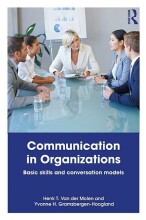Circular Economy - Artikel: Towards a circular economy: business rationale for an accelerated transition
11 important questions on Circular Economy - Artikel: Towards a circular economy: business rationale for an accelerated transition
What are the drivers of going to use CE?
- Economic losses and structural waste
- Price risks (exposure to volatile resource prices)
- Supply risks (rely on imports)
- Natural systems degradation (environmental pressures like climate change and pollution)
- Regulatory trends (regulators try to curtail and price these negative externalities)
Macarthur Foundation (2015) argues that CE is regenerative and restorative by design and distinguishes the technical and biological cycle. What is the difference?
The biological cycle contains fo flows of renewable materials. Consumption only occurs in the biological cycle. Nutritients are mostly regenerated.
What is the next wave of development when looking at the circular economy?
- Advances in technology (information technologies offering better collaboration)
- Acceptance of alternative business models (like rental and sharing models)
- Urbanisation (simpler logistics for cycles)
- Higher grades + faster learning
- Never study anything twice
- 100% sure, 100% understanding
What are the three principles of circular economy?
- Persevere and enhance natural capital
- Optimise resource yields by circulating products components and materials at the highest utility at all times in both technical and biological cycles
- Foster system effectiveness by revealing and designing out negative externalities (reduce damage to systems and areas such as food, mobility and education, health)
What are the characteristics to describe a circular economy?
- Waste is designed out
- Diversity build strength
- Renewable energy sources power the economy
- Think in systems
- Prices or other feedback mechanisms should reflect real costs (take into account negative externalities as costs and remove perverse subsidies)
What is the RESOLVE framework?
- REgenerate (shift to renewable energy)
- Share (reuse and second hand)
- Optimise (Increase performance)
- Loop (Recycle materials)
- Virtualise (de materialise)
- Exchange (replace old with advanced non-renewable resources and apply new technologies like 3D-Printing)
What is the circular economy opportunity?
- Economic opportunities (growth of GDP)
- The environmental and system-wide opportunities (reduced carbon dioxide)
- Company opportunities (new profit, greater security of supply)
- Opportunities for citizens (more income and quality)
What are the four mainstreaming opportunities for CE?
- Circular product design and production
- New business models
- Reverse cycle (collect materials and bring back)
- Enablers and favourable system conditions (education, financing, collaborative platforms)
Which drivers for Circular economy does Macarthur describes?
- Price risk; lineair systems result in volatile resource prices and supply disruptions
- Supply risks; few natural deposits of non renewable resources
- Natural system; degraded natural capital for resources
- Regulatory trend
- Technological advantages
- Acceptance of alternative business models; from ownership to access.
- Urbanization
MacArhur divided the opportunities in opportunities for economic, environmental and system-side, companies and citizens
- increase revenues from emerging circular activities
- lower costs of production
- increase spending and savings, resulting in better household's income
- employment opportunities regarding labour-intensity and high quality recycling.
Environment and system-side
- reduce emissions
- reduce primary material consumption
- improve land productivity
- reduction of negative externalities
- enhance value land and soil assets
Companies
- new and bigger profit pools (due to lower costs)
- security in supply
- new demand for business services
- greater resilience as a result
Citizens
- more choice
- lower prices
- lower total costs per ownership
- reduced obsolescence, improving quality of life.
What are the four building blocks that will help us foster a more circular economy?
- New business models (from ownership to access)
- Reverse cycle (als je iets verkoopt, dan komt het ook bij je terug)
- Enable favorable system conditions; education, financing, collaborative platforms, a new economic framework.
The question on the page originate from the summary of the following study material:
- A unique study and practice tool
- Never study anything twice again
- Get the grades you hope for
- 100% sure, 100% understanding
































